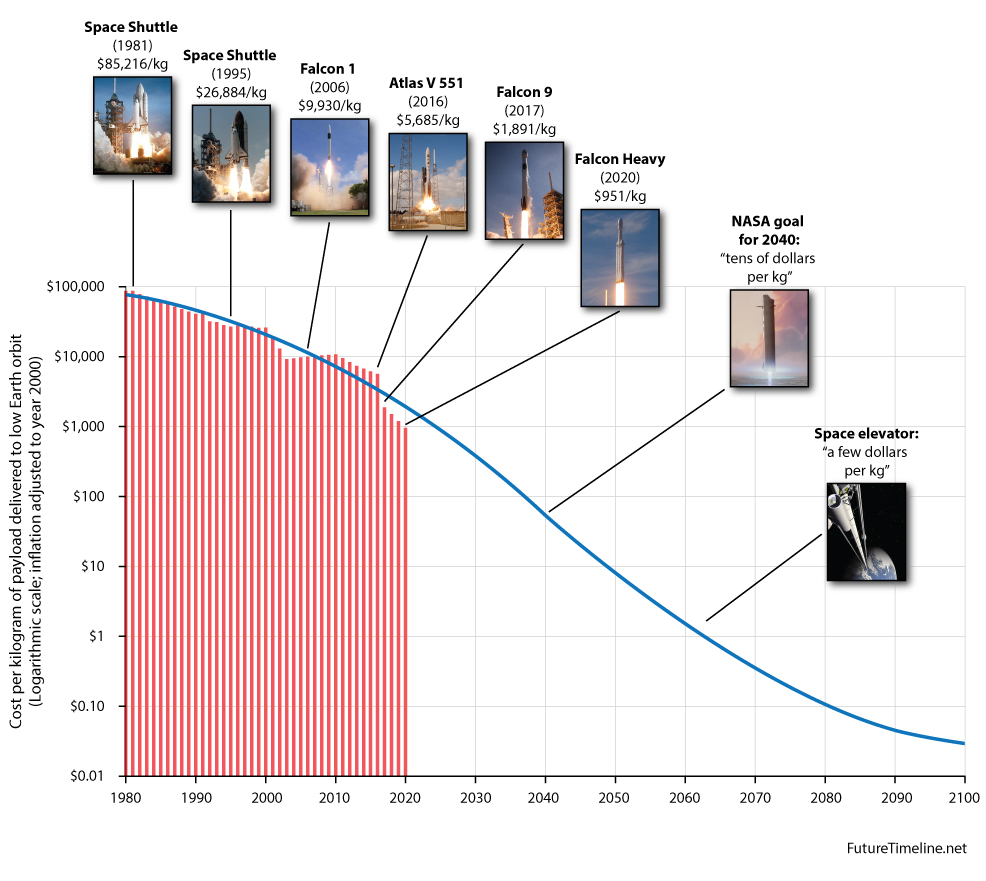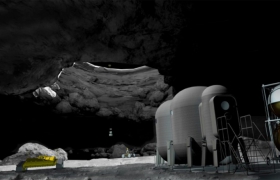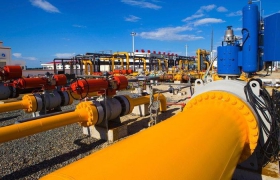- Luật
- Hỏi đáp
- Văn bản pháp luật
- Luật Giao Thông Đường Bộ
- Luật Hôn Nhân gia đình
- Luật Hành Chính,khiếu nại tố cáo
- Luật xây dựng
- Luật đất đai,bất động sản
- Luật lao động
- Luật kinh doanh đầu tư
- Luật thương mại
- Luật thuế
- Luật thi hành án
- Luật tố tụng dân sự
- Luật dân sự
- Luật thừa kế
- Luật hình sự
- Văn bản toà án Nghị quyết,án lệ
- Luật chứng khoán
- Video
- NGHIÊN CỨU PHÁP LUẬT
- ĐẦU TƯ CHỨNG KHOÁN
- BIẾN ĐỔI KHÍ HẬU
- Bình luận khoa học hình sự
- Dịch vụ pháp lý
- Tin tức và sự kiện
- Thư giãn

TIN TỨC
fanpage
Thống kê truy cập
- Online: 223
- Hôm nay: 198
- Tháng: 1621
- Tổng truy cập: 5245625
Launch costs to low Earth orbit, 1980-2100
This graph shows the declining costs of launching people and cargo into space. The figures provided here, adjusted for inflation, are for U.S. launch vehicles delivering 1 kg (2.2 lb) into low Earth orbit (LEO).
Traditionally, access to space has been extremely expensive. However, prices continue to fall with each passing decade as new technologies are developed and the sector becomes more commercialised. SpaceX, for example, has demonstrated the potential of reusable rockets. Other advances in the future may include lighter materials, the use of inflatable modules, new fuel types, space planes and/or more efficient engines.
If the overall trend continues, access to space may become relatively affordable to most people during the second half of this century. Visiting a space hotel could one day be as routine as a holiday overseas.
NASA has stated a long-term goal of making LEO accessible for tens of dollars per kilogram by 2040. The agency has also speculated that a space elevator (requiring 15 years to construct) would lower this cost even further, to just a few dollars per kilogram.

Image credits:
1981 – NASA
1995 – NASA
2006 – SpaceX [CC-BY-SA-3.0]
2016 – NASA
2017 – Official SpaceX Photos (Bangabandhu Satellite-1 Mission) [CC0 or CC0], via Wikimedia Commons
2020 – SpaceX
2040 – Space X
2060 – NASA
Các bài viết khác
- Từ sự kiện Tổng biên tập báo TIME Greta Thunberg là Nhân vật của năm 2019 đến báo cáo Biến đổi khí hậu Phúc trình của IPCC báo động đỏ cho nhân loại 82021 (15.01.2020)
- Personal service robot population, 2000-2050 (12.08.2020)
- Ninh Thuận - thủ phủ năng lượng tái tạo (12.08.2020)
- Nợ của doanh nghiệp Việt Nam trước tình trạng suy thoái trầm trọng vì Covid-19 (12.08.2020)
- TP Hồ Chí Minh: Nhiều sai phạm về quản lý đất đai, dự án nhà ở vùng ven (12.08.2020)


















































 Yahoo:
Yahoo: 